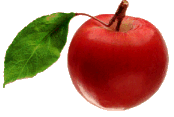
How can I get an apple on my tree?
How to get apples on my tree?
There are four stages to getting an apple: flower bud initiation, depositing of pollen on the stigma, pollen tube germination, and finally, fruit set.
Following are the optimum criteria for getting fruit on a fruit tree. Higher or lower temperatures, older or younger wood, more or less nutrients, less sunlight may produce a fruit, but that fruit is more likely to drop during the June drop or end up misshapen and/or small.
1. Flower bud initiation.
Before we can get any fruit, we must have flower buds. Apple and pear buds are 'mixed' buds when formed. They can become a flower bud or a leaf bud depending on how they are treated.
The flower buds which will open in April on apple trees were formed last May and early June. Usually, apple flower bud initiation occurs during the six weeks after bloom time. The following are essential for flower bud initiation
a) adequate nutrients, especially nitrogen, boron, and zinc.
b) sunlight - flower bud initiation occurs only where there is lots of light; this is why dwarf trees are very good for flower bud initiation
c) the branches should have an angle of 45 to 60 degrees from the vertical. Very upright branches (e.g. water shoots) do not develop fruit buds.
d) don't allow too many apples to be set because the plant hormones in the seeds of the developing apples will inhibit flower bud initiation.
e) AND if you leave too many apples on the tree, the tree nutrients will go to the new apples and not to flower bud initiation
f) there must be plenty of two-year old wood on the tree every year.


Apple blossoms develop from mixed buds (buds which contain both leaves and flowers). The first blossom to develop and open is the King bloom (see drawing on left).
This blossom, if pollinated, will produce the biggest apple. There are usually 5-6 blossoms per cluster so if the weather is not good when the King bloom is out, there is a second and a third chance to get an apple from the secondary blossoms.
The temperature must be at least 14°C (57°F) for apple pollen to be viable and fertilize the ovule. Part of the pollen fertilizes the ovule and part of the pollen forms the flesh of the apple. Over time, this fertilized ovule will develop into a seed of the apple. The more ovules fertilized, the more seeds produced, the bigger and better the apple.
If pollination is poor and maybe only a few pollen grains arrive on the stigma, a fruitlet will be formed, but it will drop off. This is called 'June Drop'.
Only well-pollinated ovules will go on to produce an apple.
Artwork by Tish Davis, West Vancouver
2. Foreign pollen must be deposited on stigma
A few apple varieties are self-fertile and will produce some apples without another apple tree nearby. Most varieties need another apple variety that blooms at the same time planted nearby.
Some apple varieties are triploids i.e. have sterile pollen. These triploids need two different apple varieties, that bloom at the same time, planted nearby OR (only) one crabapple that blooms at the same time. Even the self-fertile apple varieties will produce more fruit if there is another different variety nearby so cross-pollination occurs.
The Blue Orchard bees have fuzzy abdomens. When the bees are collecting pollen for their nests, they carry it on this fuzz and often accidentally leave some pollen on the stigma of each apple blossom they visit.
3. Germination of the pollen tube down the style.
If the temperature is above 14°C (57°F) and ideally 16-21°C (60-70°F).The pollen grows a long pollen tube which extends down the style to the ovule and fertilization occurs.
4. Fruit Set
In apples, double fertilization occurs - one part of the pollen fertilizes the egg and becomes the seed and the other part becomes the endosperm.
